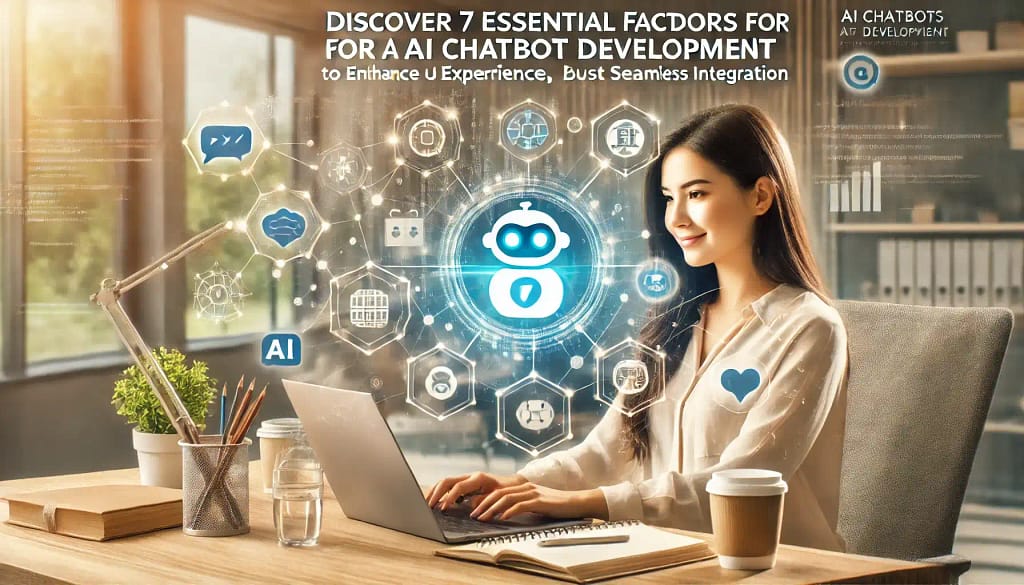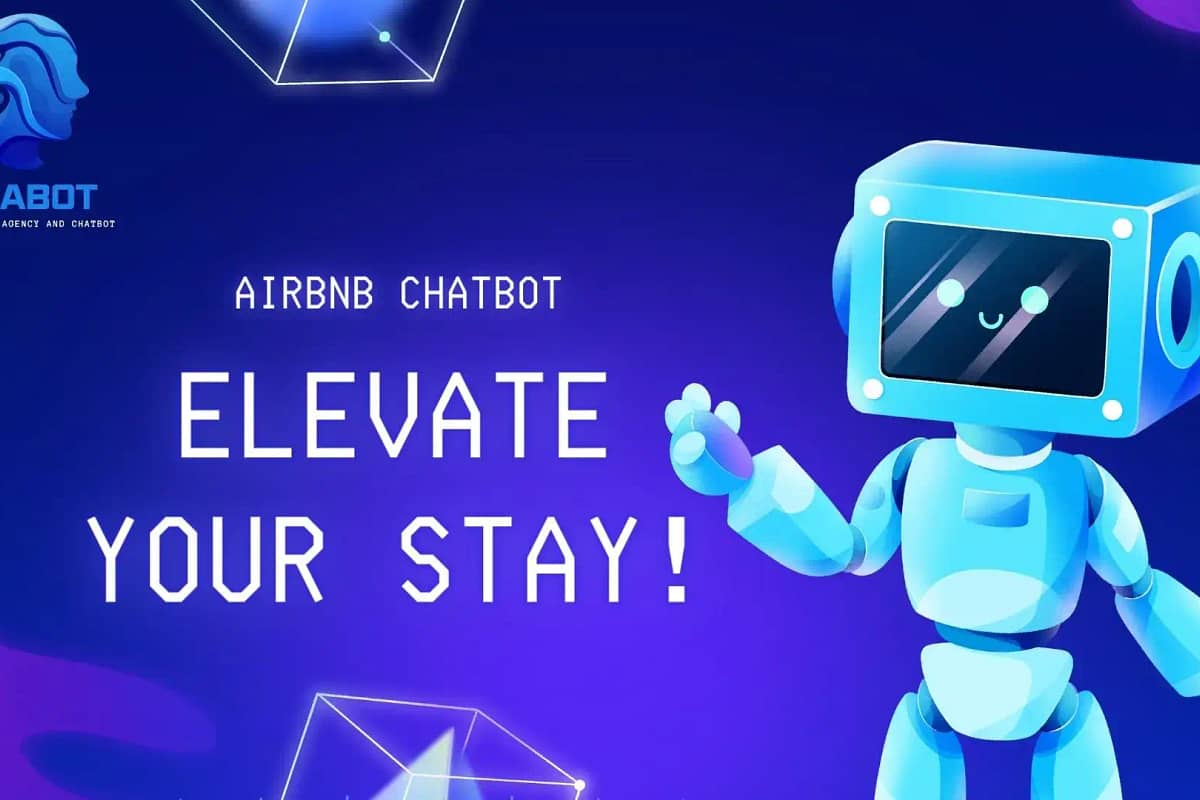AI chatbot development is transforming how businesses interact with customers. These bots provide instant responses, enhancing user experience and boosting efficiency. From customer support to personalized marketing, the applications are vast. The rise of AI chatbots offers exciting opportunities for innovation and growth. This post explores the essentials of creating an effective AI chatbot, covering key strategies and tools.
Key Takeaways
- Understand AI Chatbots: Familiarize yourself with the basics of AI chatbots, including their capabilities and limitations, to set realistic expectations for your project.
- Focus on Development Factors: Pay attention to crucial development factors like natural language processing (NLP) and machine learning algorithms to build a robust chatbot.
- Enhance User Experience: Prioritize user experience by designing intuitive interfaces and ensuring that your chatbot can handle diverse queries effectively.
- Boost Engagement: Implement strategies to keep users engaged, such as personalized responses and interactive elements that make the chatbot more appealing.
- Ensure Seamless Integration: Make sure your AI chatbot integrates smoothly with existing systems and platforms to provide a cohesive user experience.
- Test and Improve Continuously: Regularly test your chatbot and use feedback to make continuous improvements, ensuring it remains effective and up-to-date.

Comprehensive Guide to AI Chatbot Development
Definition and Purpose
AI chatbots are software applications that simulate human conversation. They automate customer interactions by using natural language processing. Their primary purpose is to provide quick and efficient responses to user queries. AI chatbots enhance user engagement and offer consistent support.
Types of AI Chatbots
Rule-based chatbots follow predefined scripts and rules. They work well for straightforward tasks but can be limited. AI-driven chatbots use machine learning to understand and respond to complex queries. Hybrid chatbots combine both rule-based and AI elements, offering flexibility. Voice-activated chatbots are gaining popularity, allowing users to interact through speech.
Key Benefits
AI chatbots offer 24/7 availability for customer support. This ensures that users get help anytime they need it. AI Chatbot Development leads to significant cost savings for businesses. Improved customer satisfaction and engagement are crucial benefits, as chatbots provide timely and accurate responses.
Common Use Cases
Customer service and support are primary use cases for AI chatbots. They handle inquiries, complaints, and feedback efficiently. In e-commerce, conversational AI chatbots assist with personalized shopping experiences. Healthcare uses chatbots for patient interaction, appointment scheduling, and information dissemination.
Essential Development Factors
User Experience Design
Creating an intuitive and user-friendly interface is vital. Users should navigate the chatbot easily. Quick response times are crucial for maintaining user engagement. Clear and concise communication ensures users understand responses without confusion.
Natural Language Processing
Natural Language Processing (NLP) enables chatbots to understand and respond to human language, playing a crucial role in AI Chatbot Development. NLP helps interpret user intent accurately. Recent advancements in NLP have significantly improved chatbot accuracy, making interactions more effective.
Integration Capabilities
Integrating chatbots with CRM systems enhances customer data management. API integration allows seamless connectivity with other platforms. Social media integration extends the chatbot’s reach, engaging a broader audience.
Scalability
Chatbots must handle increasing volumes of interactions efficiently. Scaling can be achieved without significant additional costs. Cloud-based solutions support scalability, ensuring reliability as demand grows.

Enhancing User Experience
Personalization Techniques
Using user data can tailor chatbot responses. This makes interactions more relevant. Context-aware interactions are crucial. They ensure the chatbot understands the user’s needs.
Adaptive learning helps improve personalization over time. The chatbot learns from past interactions. It adjusts its responses accordingly.
Intuitive Interface Design
A simple and clean interface is essential for user satisfaction in AI Chatbot Development. Visual cues help guide users through the chatbot’s options. Easy navigation ensures a smooth experience.
Consistent design elements are important too. They make the interface familiar and easy to use.
Contextual Understanding
Contextual understanding means recognizing the context of user queries. This is vital for providing relevant responses.
Techniques like maintaining conversation history help with this. They allow the chatbot to remember past interactions and provide better answers.
Feedback Mechanisms
Collecting user feedback is key for improvement. Real-time feedback options, like thumbs up or down, are useful. They provide immediate insights into user satisfaction.
Post-interaction surveys offer detailed feedback. They help identify areas for enhancement.
Boosting Engagement
Interactive Features
Interactive features make chatbots more engaging. Clickable buttons and quick replies help users navigate easily. These features reduce typing effort and provide clear options.
Multimedia support is also crucial. Chatbots can share images, videos, and GIFs to convey messages better. Visual content grabs attention and makes interactions lively.
Interactive forms collect data efficiently. Users can fill out surveys or give feedback directly in the chat. This makes data collection seamless and user-friendly.
Proactive Messaging
Proactive messaging initiates conversations based on user behavior. For example, chatbots send reminders for abandoned carts in e-commerce, an essential aspect of AI Chatbot Development. This helps recover lost sales.
Timing and relevance are critical for proactive messages. Messages sent at the right moment increase engagement. Irrelevant or poorly timed messages can annoy users.
Gamification Elements
Gamification adds game-like elements to chatbot interactions. Quizzes and rewards keep users engaged and entertained. They also encourage repeated use of the chatbot.
Leaderboards and badges motivate users to participate more. Seeing their name on a leaderboard or earning a badge provides a sense of achievement. These elements drive user motivation and loyalty.
Continuous Learning
Chatbots learn from interactions over time. Machine learning algorithms analyze past conversations to improve responses. This continuous learning makes chatbots smarter and more efficient.
Regular updates to training data are essential. New information helps chatbots stay relevant and accurate. Without updates, chatbots may become outdated and less effective.

Ensuring Seamless Integration
Platform Compatibility
Chatbots need to work across various platforms. These include web, mobile, and social media. Users expect a consistent experience no matter the platform. Responsive design is crucial for different devices. This ensures chatbots perform well on smartphones, tablets, and desktops.
API Utilization
APIs are tools that enable chatbots to interact with other software. Common APIs include those for payment processing, CRM systems, and social media platforms. Using APIs expands the functionalities of a chatbot. For example, integrating a payment API allows transactions within the chat interface.
Data Security Measures
Protecting user data is vital. Encryption secures data during transmission. Secure storage practices keep data safe at rest. Compliance with regulations like GDPR is also essential. These measures build trust with users and protect their information.
Regular Updates
Ongoing updates improve chatbot performance. Updating NLP models and algorithms keeps the chatbot accurate. Addressing user feedback in updates enhances the user experience. Regular updates ensure the chatbot remains relevant and effective.
Closing Thoughts
You’ve learned the ins and outs of AI chatbot development. From understanding their core to ensuring seamless integration, you’ve got the essentials down. By focusing on user experience and engagement, you’re set to create a chatbot that truly resonates with your audience.
Now it’s time to put this knowledge into action. Dive into your chatbot project with confidence and creativity. Your next step? Start building and see the magic unfold. Have questions or need more tips? Join our community and let’s innovate together!
Frequently Asked Questions
What is an AI chatbot?
An AI chatbot is a software application that uses artificial intelligence to simulate human conversation. It can interact with users via text or voice, providing automated responses.
What are the essential factors for developing an AI chatbot?
Key factors include natural language processing (NLP), machine learning algorithms, and user-friendly interfaces. These ensure the chatbot understands and responds accurately.
How can I enhance user experience with my AI chatbot?
Focus on intuitive design, quick response times, and personalized interactions. Use feedback loops to continuously improve the chatbot’s performance.
Why is boosting engagement important for AI chatbots?
Higher engagement leads to better user satisfaction and retention. Engaged users are more likely to return and recommend your service.
How do I ensure seamless integration of my AI chatbot?
Ensure compatibility with existing systems, use robust APIs, and conduct thorough testing. This minimizes disruptions and enhances functionality.
Can AI chatbots handle complex queries?
Advanced AI chatbots can manage complex queries using NLP and machine learning. However, they may still require human intervention for highly intricate issues.
What benefits do AI chatbots offer businesses?
AI chatbots offer 24/7 customer support, reduce operational costs, and improve user satisfaction. They streamline interactions and provide instant responses.






